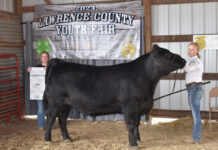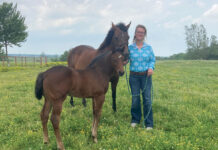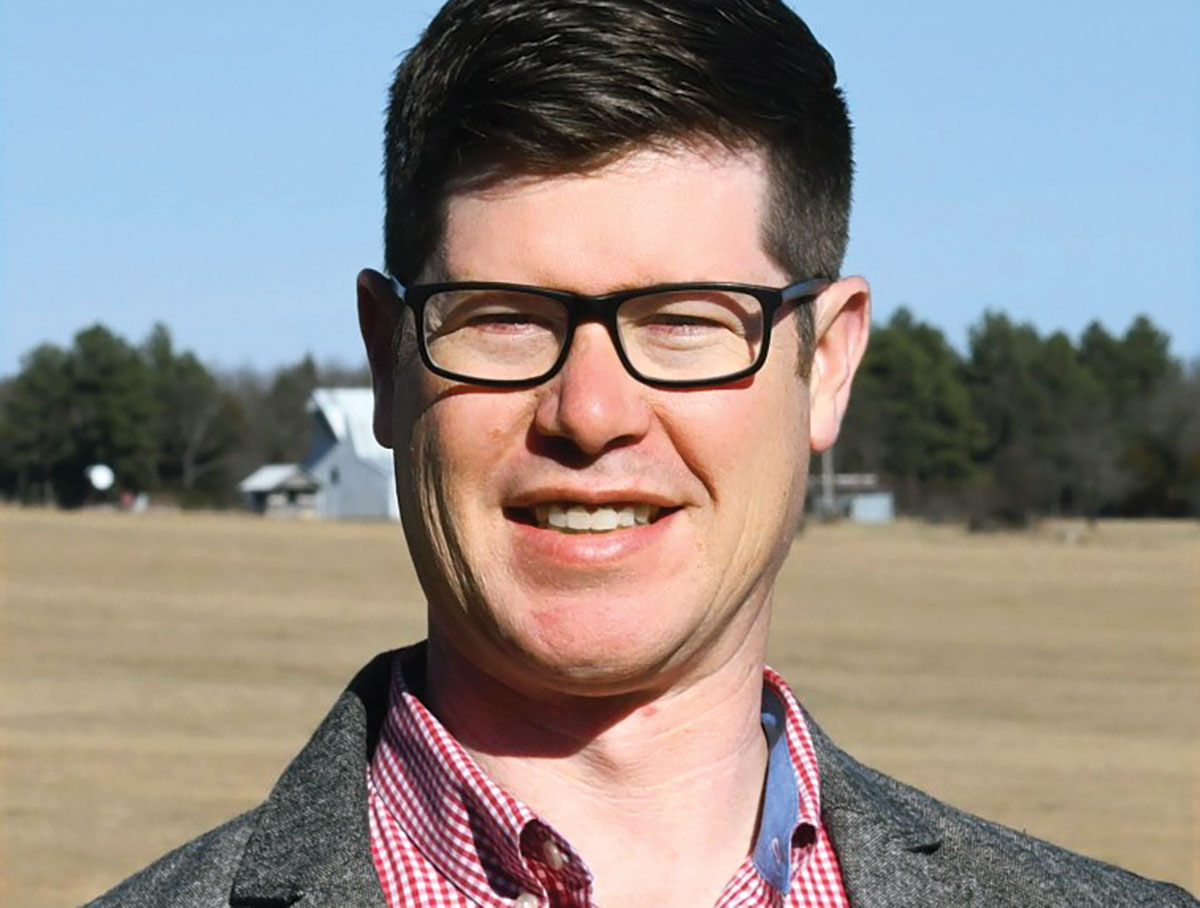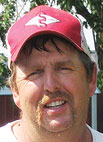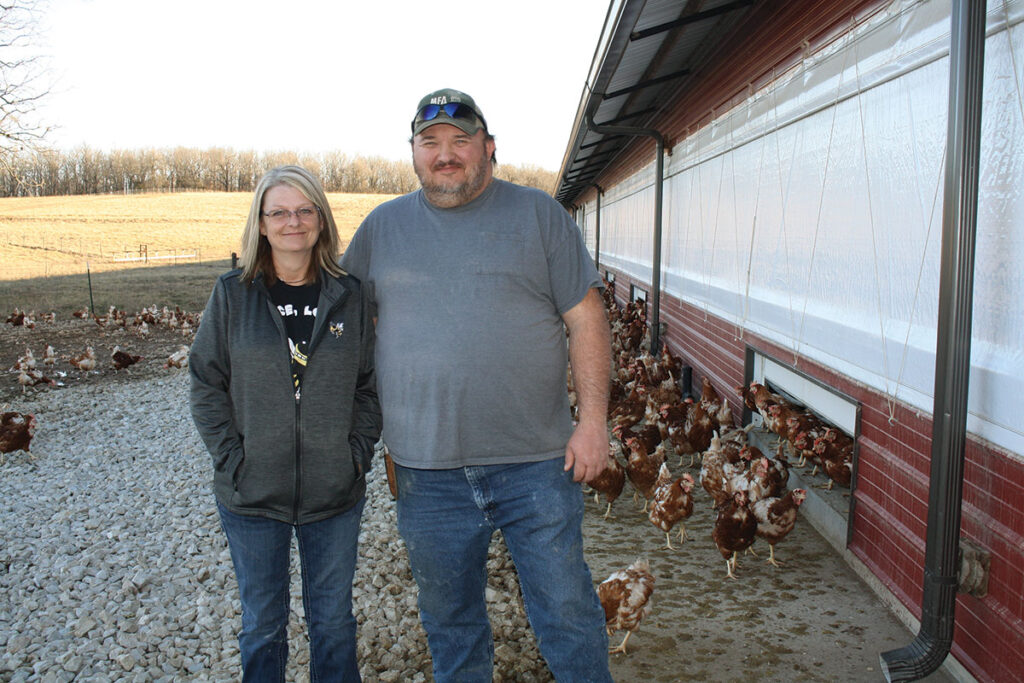
John and Tonya Sanwald diversify their farm to include a commercial laying facility
The only experience John and Tonya Sanwald had with poultry production was a small flock of about a dozen chickens and a duck named Mr. Quackers. However, on Dec. 26, 2018, that all changed when they became the owners of more than 20,000 laying hens.
Today, the couple has a poultry facility on their farm outside of Lebanon, Mo., where they produce cage-free eggs. The Sanwalds contract their eggs to Rock Hill Foods, a company with facilities in Arkansas and Georgia.
The 480-feet-long, 56-feet-wide barn has a capacity of around 22,000 birds. At top production, more than 21,000 eggs are produced daily. Current production is at about 17,700 because the birds are toward the end of their production cycle.
Eggs are gathered twice a day. An automatic collection system connected to a conveyor brings eggs into the packaging room. Gently the eggs are moved across a series of belts until they reach an automatic stacker. Along the way, the Sanwalds collect any damaged eggs and monitor the collection process.
After flats are filled, they are moved to a pallet and stored in a cooler until Rock Hill picks the eggs up.
“Last year, we produced 252,000 dozen eggs,” John said.
Eggs are transported from Missouri to a sorting and processing facility, where they are washed, graded and packaged for sale. Egges produced by Rock Hill growers, according to the company’s website, are sold at Whole Foods, Kroger and other retailers across the country. The Sanwalds and their neighbors, Justin and Kayln Raef, who also have an egg operation and sell to Rock Hill Foods, fill a semi-trailer with 26 pallets of eggs once a week.

“Our eggs have been all over the country,” John said, adding they do not produce organic eggs. Their eggs are from cage-free hens with no added hormones or antibiotics.
The Sanwald purchase Lohmann Brown pullets, a commercially-bred breed used mainly for egg-laying, at 17 weeks of age. The young birds begin laying when light is increased from 10 hours per day to 16 hours. This is done through both natural and artificial light in the barn. The flock will remain at the Sanwalds’ Back 40 Farm for 14 months.
During their time on the farm, hens are treated to a heated and cooled barn, and room to roam. On weather-permitting days, there are six outdoor paddocks.
“We rotate them like you would cattle,” John explained. “We let them out when the temperature is above 40 degrees or below 90 degrees. I can keep the barn cooler with our ventilation system than it is outside on hot days.”
A computerized system feeds the layers about 5,200 pounds of feed daily throughout five feedings. The system also monitors automatic waterers that pump about 1,000 gallons a day to the birds, with additional waterers located outside in the runs.
If there is an issue, an alert is sent to their smartphones.
John and Tonya utilize feed rations developed by Rock Hill. They source the feed regionally through Hostetler Feed & Farm in Buffalo, Mo.
“You have a pre-lay, which they get until they are 21 weeks old, then there are several layer diets,” John explained. “We are toward the end of production with this flock, so we are on Layer 26 of 30 different rations. Because we own the birds and pay for the feed, we can decide what we want to feed. At this point, these birds are not at peak production, so they don’t need the higher protein.”
Any supplements the hens may require are sent through the watering system.
“The only thing they get is like a Powerade or Gatorade to help replenish electrolytes,” John explained.
Flock health is monitored through feed consumption and egg production. A drop in either indicates there could be a problem, and the Sanwalds contact consultants from Rock Hill Foods to help analyze any issues.
After 14 months, the barn emptied, thoroughly cleaned and disinfected before a new flock is brought two weeks later, and the process begins again.
“The birds for the next flock are probably hatched in Arkansas right now,” John said. “Cleanout time is a very busy two weeks. There’s more to an egg operation than just chickens laying eggs.”
Litter cleared from the facility is spread on the Sanwald farm’s pastures and hayfields, which is about 300 acres in total, thus reducing the need for commercial fertilizers. John added the years he does not need the litter, it will be sold to other farmers.
“After so many years of litter, you do need to go with a commercial fertilizer,” John said.
One of the most significant concerns for the Sanwalds and their flocks is biosecurity. Visitors to the farm are only allowed in designated areas, and vehicle tires must be sprayed before entry.
“As soon as you get out of a vehicle and step on the parking lot, you have to have booties on,” John said. “Biosecurity is essential because a virus can wipe a whole flock out. As the industry grows, we run a bigger risk of diseases spreading, so you have to be very careful.”
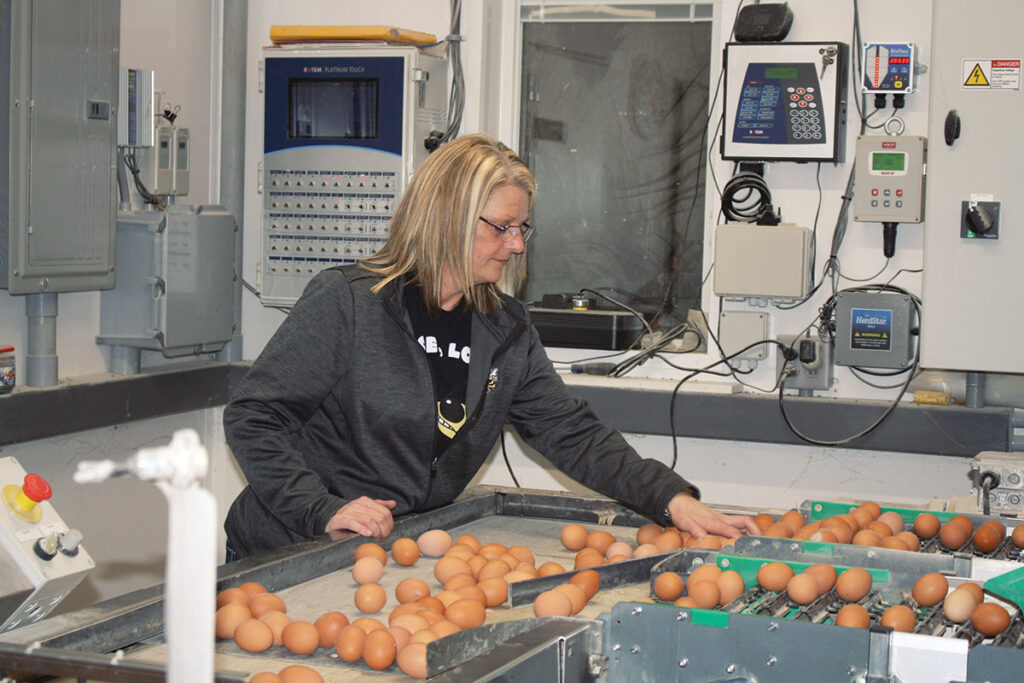
When a new flock comes to the farm, everyone assisting with the unloading and repopulating of the facility must wear bio-suits and other protective gear to reduce the risk of any outside contamination to the new birds, which are a little stressed from the transport. It takes about four hours to repopulate the barn. After a couple of weeks of laying smaller eggs, known and pullet eggs, the hens are in full production, laying large brown eggs. Rock Hill, John and Tonya explained, does purchase the pullet eggs, but they not the size most consumers see. Pullet eggs are used for items such as prescrambled eggs and powdered eggs. When COVID-19 hit, the Sanwalds donated thousands of pullet eggs to a food distribution program for Joel E. Barber School District students.
In addition to the laying operation, the Sanwald family runs 75 commercial cow/calf pairs. They typically sell feeder steers and heifers from their herd, which is split into spring and fall calving, opting to retain very few heifers.
“You have to wait two years for a heifer to give you a paycheck,” John said. “You don’t have to feed her for two years, then risk losing her when she calves or losing a calf. If I want to add females, I can buy them for less than it costs to raise one.”
The two operations, John said, complement each other because the laying facility requires less acreage, which allows them to keep their cattle herd at its current level.
“I would love to expand the herd, but they aren’t making any more land. The barn has to have 11 acres outside for the chickens to roam on,” he explained. “Some of the new contracts require 50 acres to be fenced off, so we are glad to be working with Rock Hill.”
Having both the cattle and the laying operation has allowed John to become a full-time farmer, which was the goal. They also have plans for Tonya to be on the farm full-time as well.
“That’s our end goal,” John said. “We would like to add another barn.”
The couple’s children, John James (a senior at Conway High School) and daughter Carrie Green and her husband Tyler, also help out on the farm. The eventual goal is for both John James and Carrie to each own one of the barns.
“The chickens have been good for us,” John said. “It’s paying for itself. I wish we would have gotten into it sooner.”
Adding a revenue stream to their family farm was the Sanwalds’ goal, and they encourage other producers to look at diversification as well.
“Never count anything out. Look at all the options,” John said, adding that a laying operation is not something he or Tonya would have considered 10 years ago. “We saw others go into it and thought they were crazy. In farming, you have always got to diversify; you can’t just stick with one thing for 100 years in today’s world. You have to be able to move with the flow. If not, you’ll lose your farm.”

